Reselling is one of the most flexible ventures in entrepreneurship allowing people of all skill levels, interests, knowledge, and income goals to join.
While some have the ambition of building up a solid side hustle as a reseller, others have even greater dreams of joining the most successful resellers who not only make a living with the business, but earn an income that rivals or even exceeds some of the highest paying careers out there.
However, not everyone who sets out to achieve this goal achieves it. This is partially due to a lack of consistent execution and patience, traits that apply to success in any field. But one big reason that resellers don’t end up rising to the top is that they don’t have the right approach to the game–they could learn a thing or two by observing and learning from the habits of the best.
If you want to learn from what the best do, you’re in the right place. In this guide, you’ll learn exact tips for resellers so that within due time, if you stick to the process and stay focused, one day you’ll be in their coveted spot.
10 Foolproof Reselling Tips
The following tips aren’t just theoretical advice, they’re battle-tested, proven tactics that are used by the most successful resellers in the industry. While the specifics on how to execute for a certain niche might change, using the following as a general guideline will get you thinking and acting like the top 1% performers.
Whether you’re just starting out or if you’re looking to take your reselling business to the next level, implementing these practices will help you win a larger piece of the reselling pie by increasing your revenue and profits, allowing you to build a sustainable business:
1. Research, research, and more research

All of the opportunities and connections are out there if you simply take the time to research–a lot. While you definitely need to take action and pull the trigger on opportunities that you find, every successful reseller knows that knowledge is power. Approach the game with endless curiosity, with the desire to become an expert in all relevant areas including products, trends, and the overall market dynamics.
An expert reseller would tell you to do the following if you want to research like they do:
Study Competition
Success leaves clues, and if someone is winning big in your field, get curious as to how they got to the spot they are today. Make note of their inventory, pricing strategies, product description, and customer feedback. Understand what they’re doing and why it’s working and learn how to do the same.
Analyze sales data and trends
The best resellers love to dive into data to get actionable insights. Take the time to pore through platform analytics like sales rank, volume, and price history. You can do a good bit of this manually for free with most platforms like Amazon which shows best-seller rankings and EBay which shows past sales prices and data. If you have the budget and will make good use of them, consider using software like Junglescout for Amazon or Terapeak for EBay to get more precise data on product volume and competition.
Stay on top of industry news and product releases
Subscribe to industry newsletters, follow social media accounts, and if applicable, attend trade shows so that you can not only stay on top of current trends but predict when they’ll die out or when new ones might emerge. Having this foresight will allow you to move more quickly than competition and adapt to any of the inevitable market changes that occur.
Understand and act with the fluctuations in demand
Seasoned resellers understand that the market isn’t only dynamic, they expect it to be that way and thrive on their ability to adapt quickly and capitalize on profitable opportunity windows and leave them as fast as they need to if any data points to a trend reversal. Being able to understand seasonality will allow you to move inventory efficiently and avoid the beginner mistake of being stuck with inventory that is no longer in demand.
Actionable pro tip: Once you’ve found a solid list of resources and tools that are specific to your niche, block out a daily time slot to go through each of these, taking notes on any new findings and going deeper to learn even more about the products and trends of your industry. Outside of this dedicated time slot, make it easy by following social media accounts related to your niche so you see news as you scroll.
2. Get a unique edge

As with any business, if you’re easy to copy, you have no value and you will struggle to last. While you can get lucky and make money inside of a niche when the market is hot enough, this success will be short-lived, making for an inconsistent strategy that will never give you the ability to build a long-term, thriving business. Here’s how you can gain that edge:
Stick to a solid reselling business model
As a reseller, you can choose to run your business with several different models. The key to success is trying each out until you find one that best suits your skills, resources, and goals, then sticking to it consistently. Whether you opt for retail arbitrage, wholesale, dropshipping or Amazon FBA, each model has its own advantages as well as challenges. We’ll dive into each of these in-depth later in this guide.
Become an absolute expert in your niche or product category
No one is born an expert in their field, they earn this with research and action. While it will take some time to reach your desired level of expertise and reputation, putting in consistent efforts to get there will give you an edge that will be nearly impossible to compete with.
Niche within a niche
While picking a niche is basically mandatory if you want to have any degree of consistent success as a reseller, you can gain an even greater edge by niching down to a specific category or product and becoming the go-to seller for that. Some of these submarkets for specific items can be in-demand and give you an incredibly loyal audience. Examples include selling only vintage Air Jordan 1’s, specializing in 90’s and Y2K jeans, Chrome Hearts rings, rookie players cards or vintage Nintendo consoles.
Actionable pro tip: Start with your own strengths and passions as this is your inherent edge that no one can genuinely compete against. These advantages don’t have to be strictly business-related, they can also be within the so-called soft skills. For example, if you’re aesthetically gifted, take better pictures and pick more eye-catching items than everyone else, and if you have a good taste for trending fashion, curate your own lookbook of one-off items that your customers will eagerly await restocks of.
3. Find consistent sources for profitable inventory

Inventory is the lifeblood of any products business, and with reselling, this is particularly true. Elite resellers don’t simply rely on luck to find great deals, they cultivate relationships with suppliers, manufacturers, and even other resellers to make sure they have a steady stream of profitable inventory.
Here are some methods to consistently source profitable inventory:
Become a retail arbitrage pro
Retail arbitrage boiled down to its core is simply the art of finding a product being sold low on one marketplace and higher on another, and profiting from the spread between them by buying low and selling high. Top resellers put in the time to find the absolute cheapest places to buy inventory that consumers often overlook, and they also know which marketplaces buyers are most likely to pay top dollar for the exact same items.
Explore unique sourcing strategies
One of the best ways to expand and diversify your sourcing strategy like a veteran reseller is to explore unique methods like sourcing internationally, dealing with return pallets, and seeking liquidation sales. Some of these may require a larger budget and more due diligence, but keep them on your radar and act on them when possible.
Network with others in the industry
Not every reseller is in direct competition with you. It’s possible to engage in a mutually beneficial relationship with a seller in your industry who has a different customer base, so you can make deals to source products that they have that you can perhaps sell for a higher price.
Actionable pro tip: Create a spreadsheet of potential suppliers and reach out to at least five new contacts each week to build your network. Don’t just focus on making sales- build genuine relationships by offering mutual value to your suppliers, helping them to move inventory faster with win-win deals.
4. Impress your customer

Any reseller who has managed to build a loyal audience will tell you that you need to view every single sale as an opportunity to gain a customer that will come back for more, and the only way to do this is to do everything you can to impress them. Here's how you do that.
Be prompt in communication
Today’s online shopping world is coming closer to instant gratification, so it’s important to attend to their questions and concerns quickly. If possible, set up an automated response for common questions and aim to reply to any other inquiries within a few hours, if not sooner.
Overdeliver
And if it allows for it, sometimes underpromise. For example, if your standard shipping is 3-5 days, upgrade it to 2-day shipping at no extra cost to the customer. They’ll be pleasantly surprised to see their item earlier than expected.
Personalize when possible and appropriate
Including a handwritten thank-you note with an order is sometimes welcomed as a nice touch, and if you have a loyal customer who has given you an idea of what they like, let them know of new inventory before you list it to the general public to make them feel like VIPs.
Handle issues gracefully
No matter how well you run your business, problems will arise. How you handle these issues can turn a potentially negative experience and bad review into something positive. Be quick to respond to issues, empathetic, and generous in your problem-solving as this can build your reputation and customer satisfaction.
Actionable pro tip: Consider building and implementing a customer feedback system that you can execute to build and maintain an excellent reputation.
5. Show your products in their best light
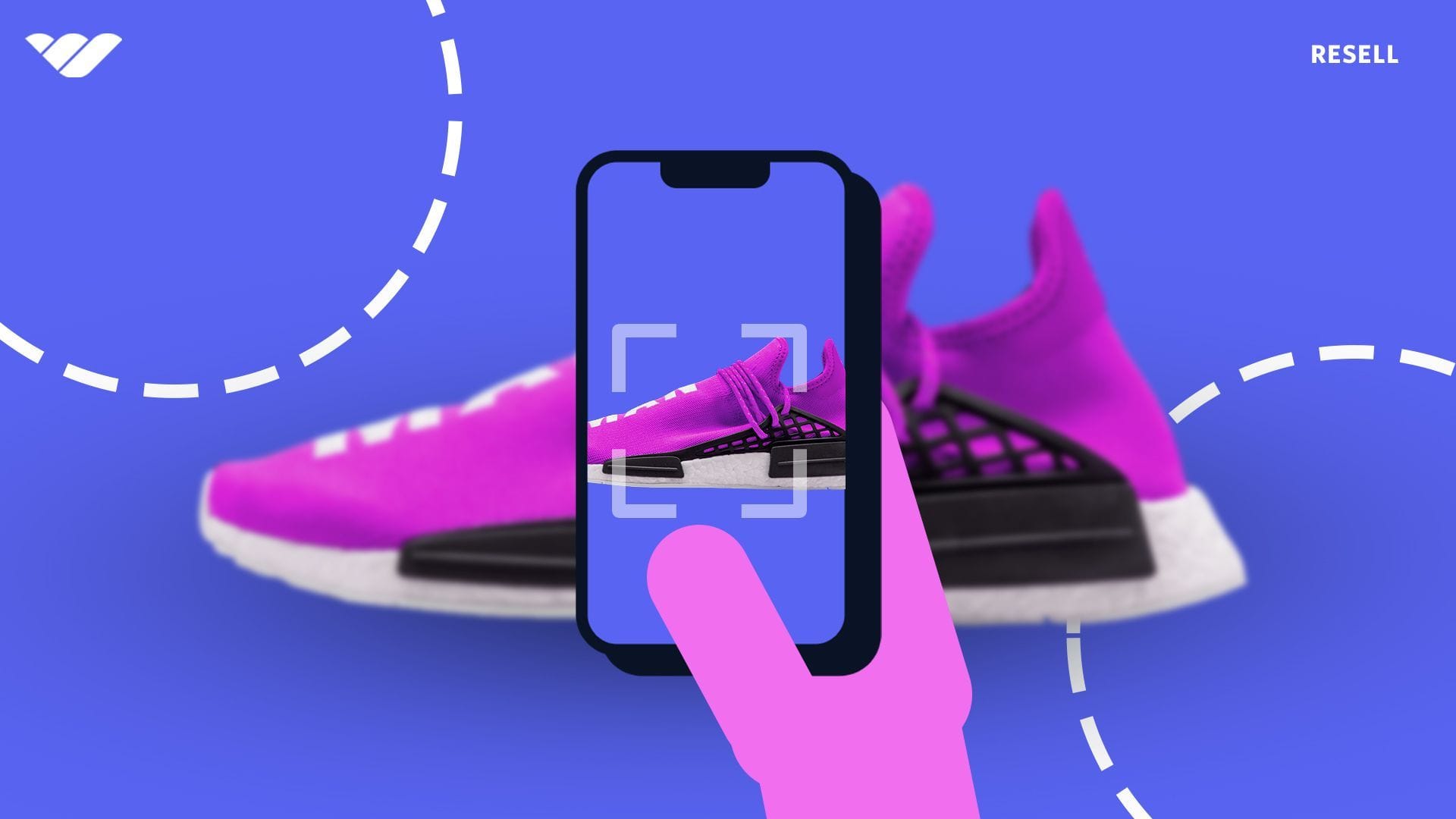
Presentation is everything in winning customers over for a purchase. Top resellers know this and invest the time and resources into creating high-quality product listings that stand out from the competition with the following methods:
Take good photos
While this might seem obvious, some sellers still overlook the importance of having quality photos for their listings. Consider investing in a good lighting setup and learn how to work your phone camera–if you have any modern phone, it’ll be good enough for product photos. Take multiple shots from different angles, including close-ups of important details and potential flaws.
Detailed and accurate product descriptions
Having a detailed and accurate product description signals to the buyer that you have put the time and effort into telling them everything about the item so they can make an informed decision to buy it with total trust. Be honest with any flaws as you’ll still have buyers that will accept them, and it’s better to not surprise a buyer with anything negative that was unexpected.
Get your product in prime condition
Before listing your item, ensure it’s clean and presentable. It can literally take just a few minutes to clean up the item to make it presentable for photos, and this could make a huge difference in conversion. If you bought used clothes, wash them with mildly scented detergent and make sure they’re wrinkle free before taking pictures.
Repair and restore
Some of the best reselling profit opportunities are in buying things that need to be fixed. Get good at repairing and restoring specific items like shoes, clothing, or electronic devices and this will allow you to fetch the highest prices and can even become its own side hustle.
Actionable pro tip: Create a standardized process and dedicated space for taking pictures and prepping products for reselling. As your business expands and you take on staff, this will help keep the visual qualities of your products and their listings consistent and top notch.
6. Choose the right sales platform for your products
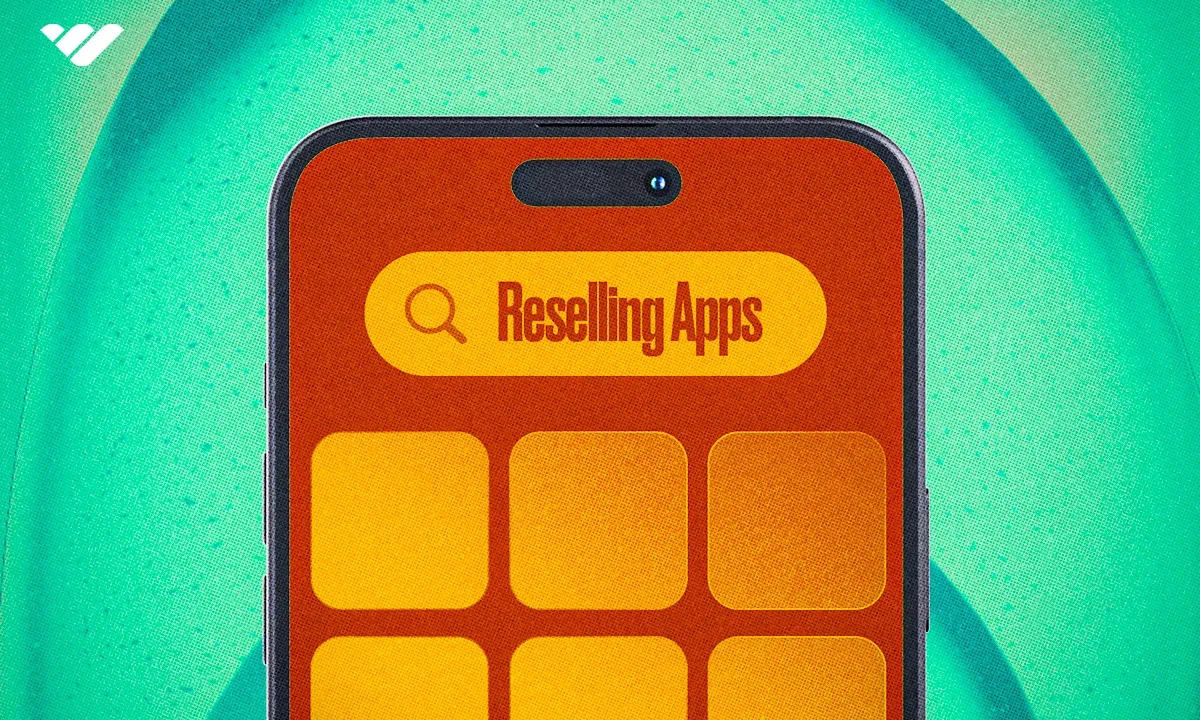
Not all platforms are made equal–your product might be a total dud on one marketplace while having the potential to fly off the digital shelves on another.
Picking the right platform starts with understanding your consumer and where they prefer to shop for their item–buyers in some categories, such as watches, sneakers, designer and vintage clothing can be quite picky, so you’ll need to sell your items on their preferred marketplace if you want to fetch top dollar.
Consider these factors when choosing a platform:
Target audience
The most important consideration when choosing a platform is your niche and its target audience. Different platforms attract different demographics, so your odds of selling quickly or at all and the prices you can fetch will vary greatly, especially for niche audiences. For example, selling a high end watch will be easier on Chrono24 than on EBay, and hyped streetwear is better sold on Grailed than Vinted.
Fees and pricing structure
One of the greatest factors in your profit margin or lack of it is the cost of selling on the platform, the highest of which is the seller fee which is typically around 10%. Consider platforms like Vinted and EBay which offer no seller fees for clothes to save big on these areas, and only pay for premium seller accounts if you can really justify their costs.
Tools and features
Each platform offers different capabilities and tools that are useful to both buyers and sellers, some of which offer more options and functionality for managing inventory, analyzing sales data, and easily creating listings. Be sure to familiarize yourself with the potential of all features that are included in the free version of each platform and to compare them before considering potentially paying a subscription for more capabilities on your preferred platform.
Brand building potential
Some platforms allow for more customization and branding for your storefront, which gives you more potential for creating a loyal audience. Consider the style of brand that does best on each platform as well, as they can vary greatly. For example, Poshmark favors more personalized brands due to the social nature of the platform while EBay stores need to be more professional.
Actionable pro tip: When starting out, try every relevant platform to test which is best for the inventory you have in terms of the price you can get, the speed at which the items sell, and the response and loyalty of your audience. Consider using a cross-listing tool to efficiently manage inventory across all marketplaces before cutting down to the platforms or single platform that is performing best based on the data you collect.
7. Organize your inventory
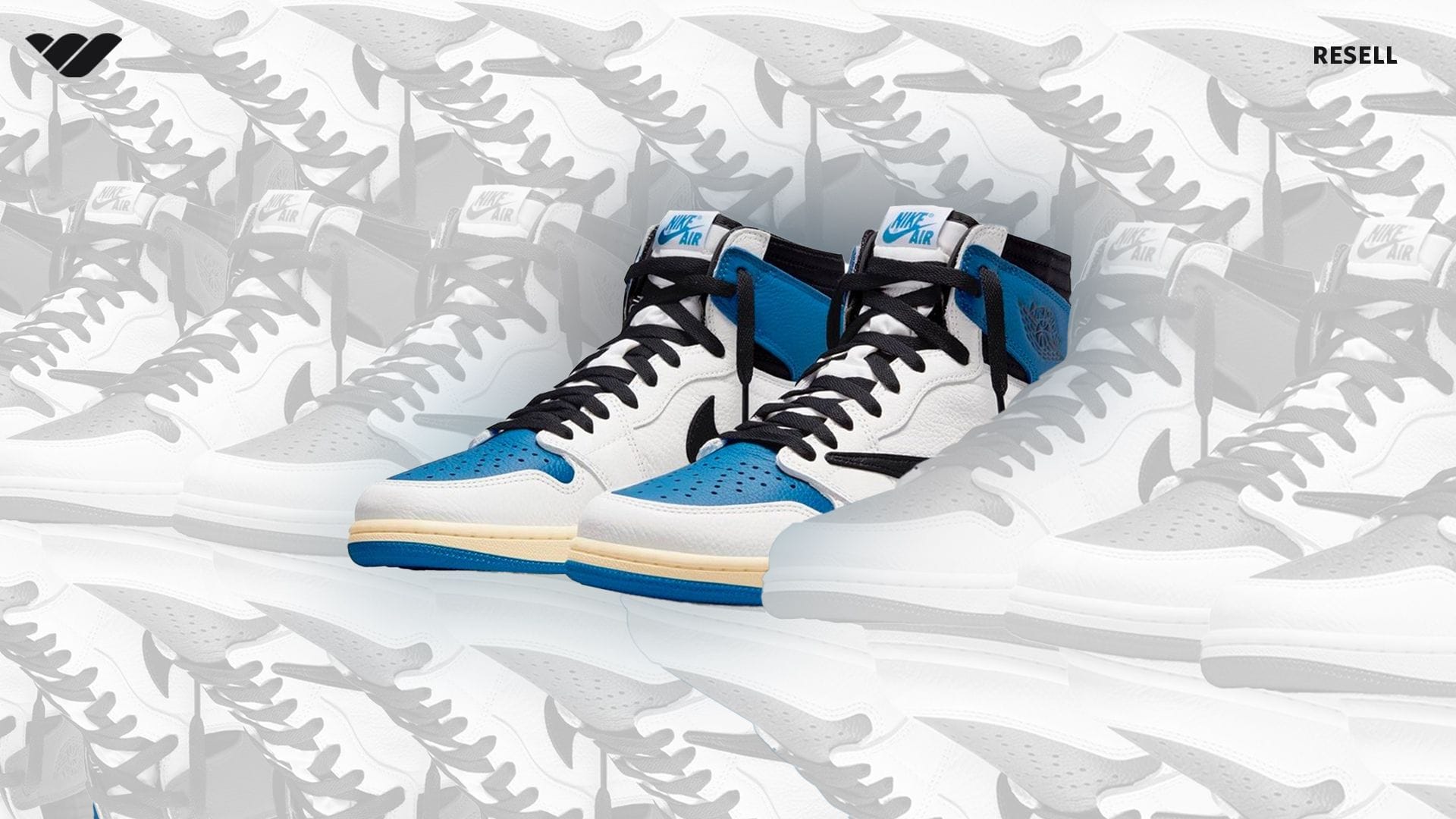
If you’re a top reseller, you’re likely dealing with a high volume of product, in which case organization is critical to running a smooth business and avoiding delay or even mistakes when sorting and fulfilling items.
Even if you don’t have a warehouse with SKUs yet, you’ll want to build the habits early so that when you do reach this level, you’ll already have the systems in place to have inventory organized as it should be.
Here’s exactly how you should be organizing inventory by implementing systems to:
Label products and organize for easy access
Develop a clear and consistent labeling system that will allow you to quickly locate items. This could be as simple as using colored stickers for different categories, or it can mean using a barcode system. From the beginning, organize your storage space logically, grouping items by category and size for easy access.
Track stock levels and forecast when to reorder
Start by creating detailed spreadsheets that you update with current stock levels and create charts that you can visualize by date to get an idea of when to replenish inventory and how much you should buy based on historical data. Set up alerts for when items reach below a certain threshold to make this easier.
Monitor seasonality or expiration dates
For items that are seasonal or have expiration dates, make sure to create a defined calendar with cutoff dates and a tracking system to make sure you’re selling these items at the rate they need to be sold at to get rid of all of them before they hit expiration.
Actionable pro tip: While you can start with and continue to use spreadsheets, this will require a lot of manual work and might mean hiring assistance. Once you reach a certain volume, using inventory management such as Sortly or Inventory Lab is often worth the cost as they streamline the process of inventory labelling and management.
8. Track everything

Pro resellers are experts at tracking everything, and in this case, spreadsheets are their friends. They’ll use them to track several key metrics, including:
Cost of goods sold
The cost of goods sold shouldn’t just incorporate the purchase price of the item, it should factor in all other associated costs including platform fees, shipping and fulfillment, and storage costs. Factoring everything in will give you the complete picture of what it costs for you to acquire an item to sell beyond the price you pay to get it in your hands.
Profit margins
Setting a benchmark for target profit margins to keep your business in the green is crucial, and top resellers break this down not just by individual items but by product categories, brands, and even exact sourcing methods. This granular approach helps them to identify which areas of their business are most profitable and which might need updates or elimination.
Sales velocity
Health cashflow keeps your business afloat, and there’s no better way to track this than seeing how quickly your items are selling. This will also help with managing inventory levels, with fast sales justifying larger future purchases and slow sales calling for cutting down.
Return rates
While it’s not a fun thing to track, returns happen. Keep an eye on any items that have an unusually high return rate, and figure out whether or not the reason for return is within your control or not. Cut out any items that simply have a high return rate simply based on the category they fall in, and be sure to fix any issues within your control promptly to reduce future return rates.
Conversion rates on marketing efforts
The most profitable resellers have their own brand that often requires marketing efforts to grow and sustain presence, but they won’t just throw money at promos or advertising without analyzing their efforts. One of the most important metrics they’ll track in this area is the overall conversion rate, which is the greatest indicator of whether or not a method is worth continuing.
Actionable pro tip: Use Google Sheets or Excel to create a master tracking document, and set up formulas to automatically calculate key metrics like profit margins and return on investment. Consider buying a template that other sellers use or get software that will help you input and track data within an easy-to-use dashboard complete with custom reports.
9. Reinvest

Most seven-figure sellers didn’t get to that figure in a single leap, they consistently and strategically snowballed profits back into their operation to allow it to blossom to its full potential.
Here are some exact methods that they used to grow to huge levels from humble beginnings by reinvesting:
Doubling down on profitable inventory
If there’s any shortcut that a top reseller used to get to their level, it would be that when they found a winner, they weren’t afraid to buy as much of that inventory as possible. Do this intelligently by not overextending your budget and reinvesting your earnings and scale as much as you can.
Using paid tools and software
While there are plenty of free tools and software including those that are already built in the platforms, the most successful resellers know that sometimes the paid tools are worth the price. They invest in premium subscriptions for inventory management software, market research tools, cross-platform listing software, and automated repricing systems. These tools not only save time but provide invaluable insights that give them an edge over competition.
Hiring help
It’s typical for top resellers to start as a one-man operation, but everyone who is doing significant amounts of revenue and profit will tell you that it’s impossible to get to these levels without hiring help. Start small by hiring virtual assistant and part time freelancers for simple tasks before you scale up to longer term and more formal employees.
Investing in education and skill development
Ecommerce is a constantly evolving landscape, so top resellers never stop learning, and while they will do much of this for free, they know the value in paid resources. It’s well worth it to pay money for premium education such as courses, live conferences, and private groups or coaches to keep you on the pulse of the latest news and strategies.
Actionable pro tip: Create a reinvestment plan from the beginning that allocates a specific percentage of your profits to these growth areas. 20-30% is a good start. As your business grows, review this plan and adjust accordingly based on which areas are giving you the best returns. Remember that reinvesting like a pro means that you are strategically allocating resources to areas that fuel long-term growth.
10. Create systems to scale
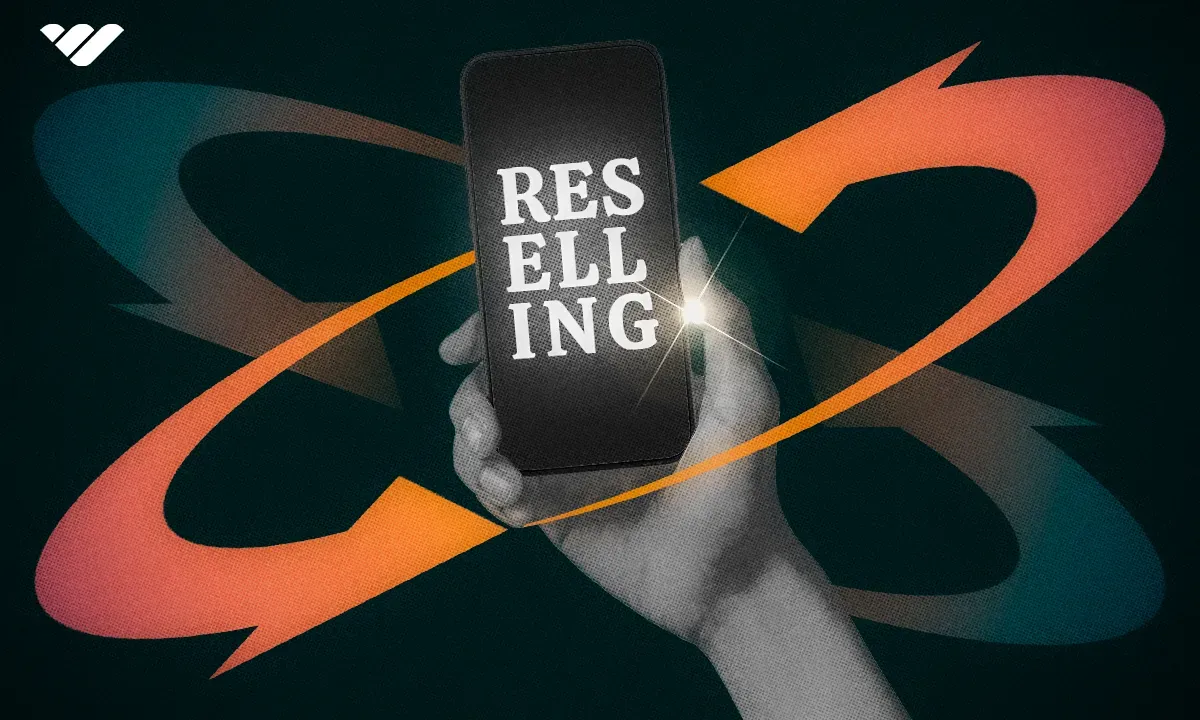
Top resellers have operations that run like well-oiled machines that are the product of effective systems that allow for scale.
Here’s exactly how they do this:
Automate or delegate repetitive tasks
One of the biggest mistakes that solopreneurs make is holding on too much responsibility and control over time-consuming, redundant tasks that are better off delegated. Learn to let go of your control and trust that you can either automate or efficiently delegate these tasks to software or staff so you can have more time to work on more high-value activities.
Develop standard operating procedures (SOPs)
Document all of your processes in detail so that you can quickly and easily train your staff to accurately carry out everything that is necessary to continue to scale and maintain your business. Having SOPs ensures consistency in operations and reduce any confusion or questions from anyone in the business and make it easy to onboard anyone new.
Set up an infrastructure for scale
If you want to grow your business to big levels, you have to be ready to support those operations. Have the foresight to build sufficient infrastructure that can handle an increase in demand. Handling volume during the fourth quarter is a good preview of what you’ll need to have in place in the future on a day-to-day basis. This might include having a robust inventory management system that can handle thousands of SKUs, setting up a dedicated workspace or warehouse with extra room, and having a CRM system to manage customers.
Build a core team
Piece together a loyal team that you carefully hire and train to run your business efficiently. Not only will this allow you the potential to scale and maintain high levels of volume, you’ll be able to take a step back from the business to focus only on the most high-leverage tasks. Having a good team complete with effective SOPs also gives you the opportunity to sell your business if you are looking to cash out with an exit.
Actionable pro tip: Take time and effort to visualize and put into action an operation that allows your business to operate at its full potential. Start by identifying time-consuming or repetitive tasks and learn to delegate them while you continue to piece together a team and system that will get you to where you want to be and to keep you there.
What are the Best Reseller Business Models?
Most top resellers will pick a single business model and become an expert in it. Here are some of the best reseller business models:
Retail arbitrage
This model involves buying products at a discount and reselling them for a profit. It’s a great way to get started with a low initial investment and to give you initial profits and incentive, and it’s also a model that some resellers stick with and scale if they find they’ve hit a niche that allows them to do so. Success in retail arbitrage comes down to being able to quickly identify and source items for the lowest possible available price and knowing exactly where to sell them where they most demand and highest prices.
Wholesale
One of the most common business models for any form of retail is buying an item in bulk and selling the product individually. While most resellers will source products one at a time, you can save time and have the potential for more consistent profits by finding a wholesaler whose products you can resell. This will require more budget and more research including some trial and error before finding profitable wholesale sources.
Dropshipping
Dropshipping allows you to sell products without holding any inventory. It can also be done without the need to invest any money up front for inventory. Whenever a customer places an order, you will purchase the item from a third-party dropshipper that ships it directly to the buyer without you needing to ever handle it. If you engage in this model, be sure that you’re working with a reliable supplier that has quality product and be ready to operate on slim profit margins in a competitive environment.
Amazon FBA
Amazon has reached its current status of a near-monopoly by dominating multiple aspects of ecommerce, including logistics and fulfillment. Their privately owned fulfillment network allows for the highly popular Amazon Prime which Fulfillment by Amazon (FBA) sellers are able to participate in. While FBA can be competitive and requires navigating Amazon’s policies, it also supports a large number of self-made six and seven-figure reselling operations.
How Do I Remain Compliant as a Reseller?
While as a whole, reselling is generally legal as long as you are selling rightfully purchased goods that are consumer friendly, you’ll still want to make sure you’re set up properly to succeed and fully compliant with local laws and regulations.
As a general precaution, you should formally register a reselling business, and as soon as possible get proper licensing or a resale certificate. This will allow you to purchase goods sales tax-free for resale purposes, gain credibility to deal with any supplier, and to fully ensure that you’re operating within legal parameters.
One particular area where you’ll have to pay special amounts of concern is if you’re dealing with tickets, as many regions have specific laws regarding ticket reselling. Always research your local regulations and if necessary, consider consulting with a legal professional to ensure full compliance.
Which Resellers Make the Most Money?
If you want to know the exact types of resellers that pull in the largest amounts of money, here are some specific examples of those that are most likely to be in the top 1% of earners doing six or even seven figures in profit annually:
High volume resellers
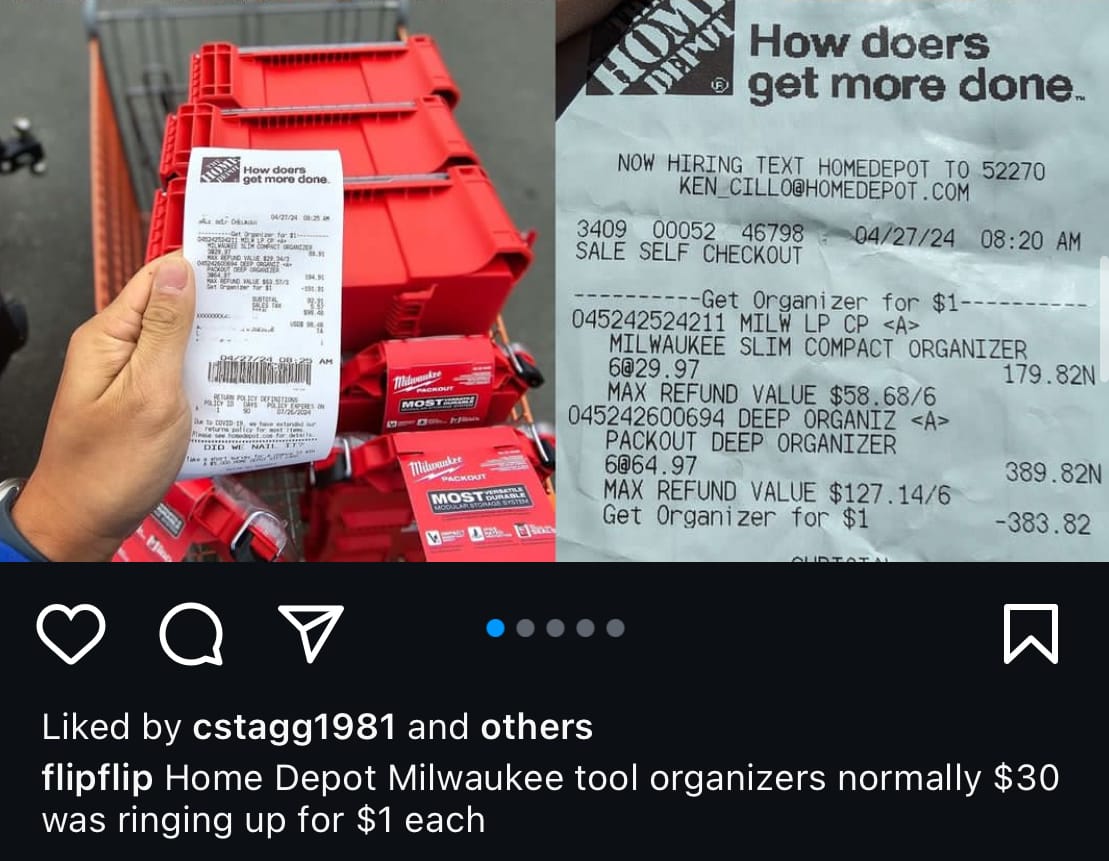
Moving large quantities of items almost certainly means that you’re driving significant revenue, and as long as profit margins are good, this means a successful business. If you’re aiming for high volume, reduce your target profit margin in favor of a lower price on the marketplace with the aim of making money in quantity rather than per-item profitability.
Going high-volume requires you to have a consistent sourcing method and a larger budget, but most seven-figure resellers are high volume resellers.
Limited edition and rare collectible resellers
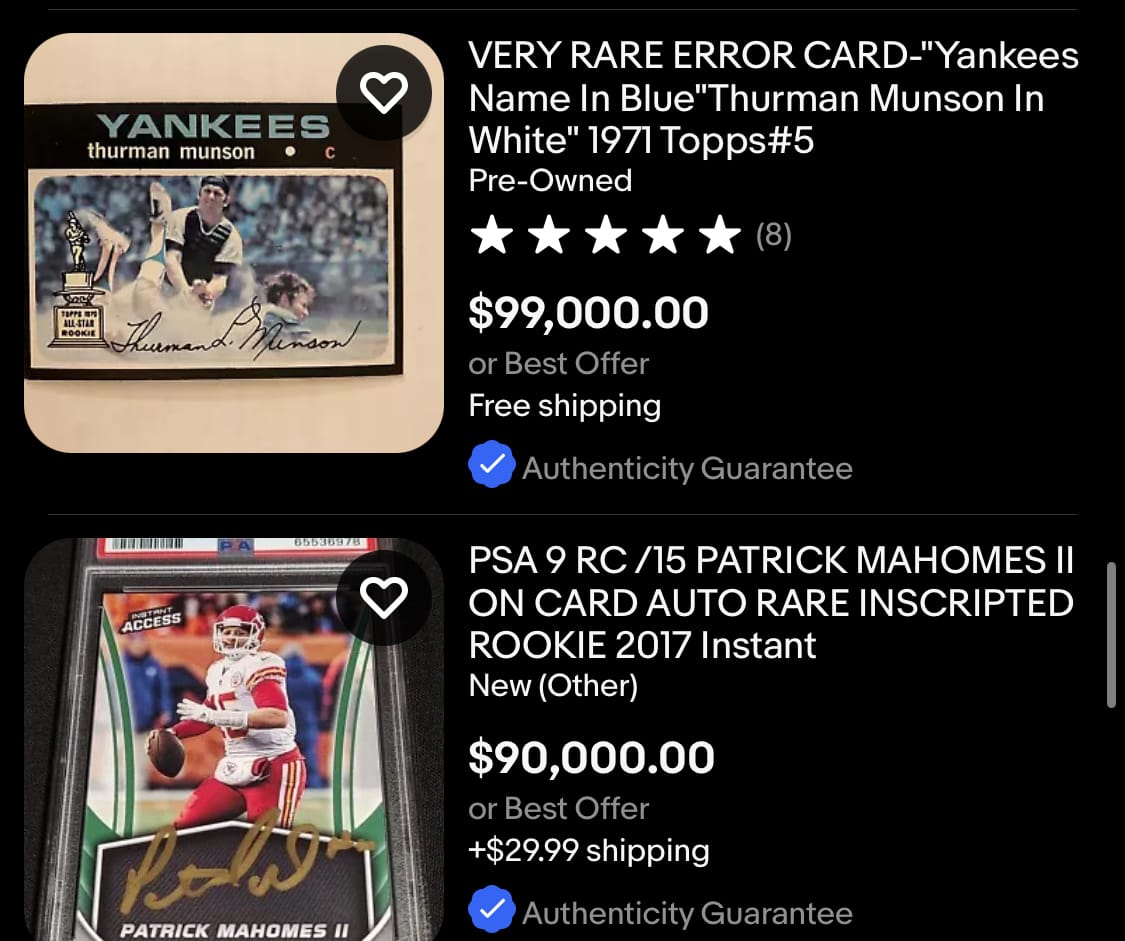
People who are looking for limited edition and rare collectibles are an audience that is more commonly willing to pay top dollar, which means you can often justify a healthy margin if an item is particularly hard to find.
However, the reason people are ready to pay up is because these items are hard to come across, so you’ll need deep niche knowledge combined with a network. If you do have what it takes to stand out in this niche, you can find yourself making solid profits.
Luxury item resellers

When you’re dealing with luxury items, the prices are often so high that you don’t need to sell that many products to make healthy amounts of money, meaning that scaling your business to even a moderate level can yield hefty profits. Make sure you have a large budget and greatly prioritize the customer experience as you’ll be dealing with buyers that are often particular in their tastes and high in standards.
Car flippers

While success with flipping cars will require more capital and specialized knowledge, it’s possible to make am substantial profit on each sale. Unless you become a dealer, you won’t have enough volume to create a seven-figure business but you will have the potential to make several thousand dollars per flip. This is another area where you need to check local regulations to ensure full compliance.
Find Reselling Tips, Advice, and Strategies on Whop
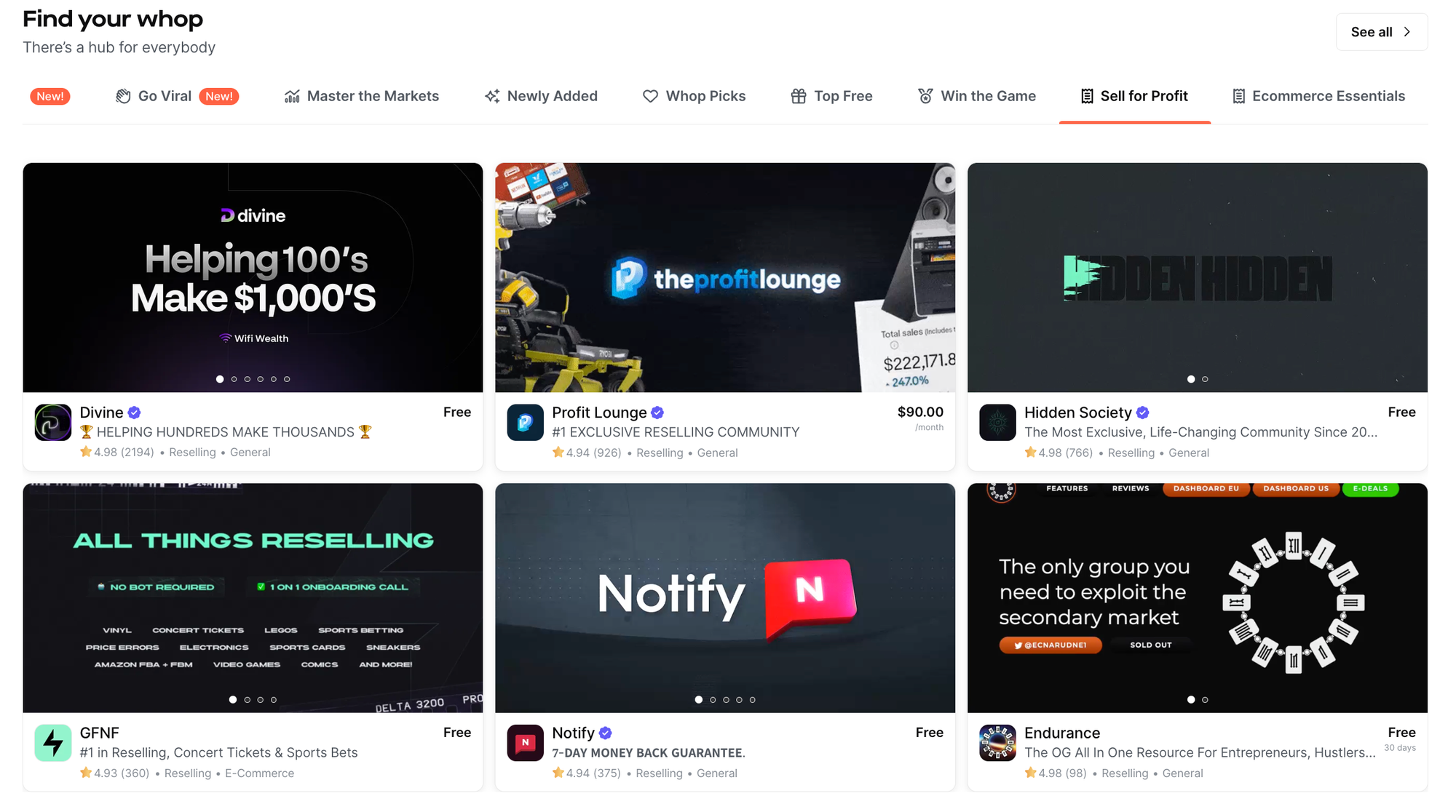
Getting to the top percentage of any realm in business, including reselling, is a journey that requires a well-thought out strategy to scale along with patience, persistence, and a willingness to learn. As you go about your journey, keep these pro tips handy–feel free to bookmark this article for future reference. Remember that they will broadly apply to any niche you’re dealing with, so whether you’re flipping cars, reselling sneakers, or dealing in luxury watches, these core strategies will remain the same.
But why embark on this journey alone if you could be guided every step of the way with the direct help of seasoned pros inside of an exclusive environment?
If you’re looking to accelerate the process and leverage the help and knowledge of others, consider joining a reselling group on Whop. With many established groups in multiple niches that are fully stacked with tools and complete with tight-knit, expert-led communities, it should be easy to find a group that’s a good fit for you.
Check out our top picks for reselling groups here, and to browse all resell-focused group, head over here to see what’s currently available to take one step closer in your journey to becoming the successful reseller that you aim to be.


![Top 18 best ticket reselling Discord servers [November 2024]](/blog/content/images/size/w600/2023/12/Top-Ticket-Reselling-Discord-Servers--1-.webp)
![Top 22 best sneaker reselling Discord servers [2024]](/blog/content/images/size/w600/2024/01/sneaker-reselling-discord.webp)
![Top 26 best reselling Discord servers [November 2024]](/blog/content/images/size/w600/2023/09/reselling-discords.webp)
